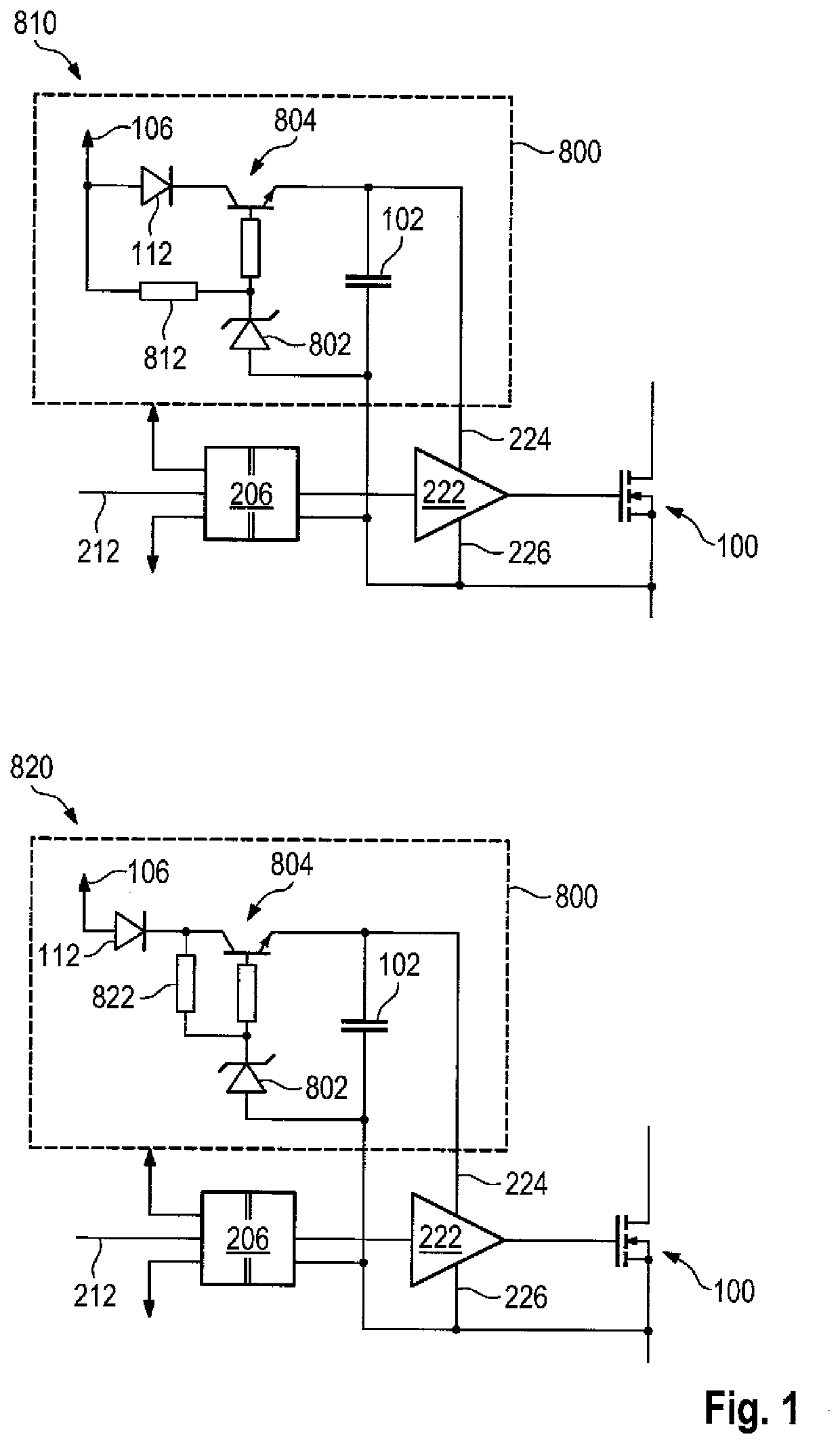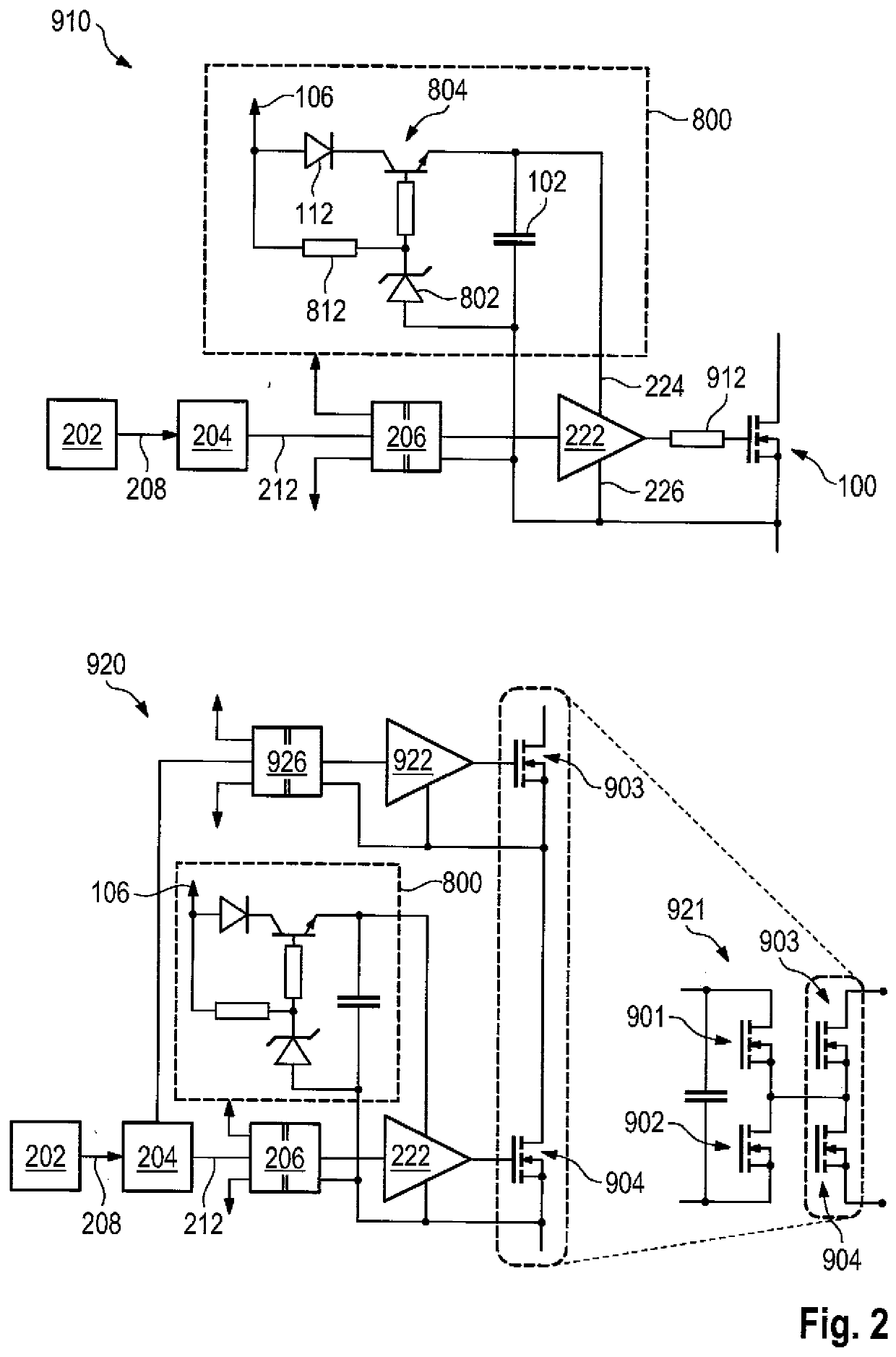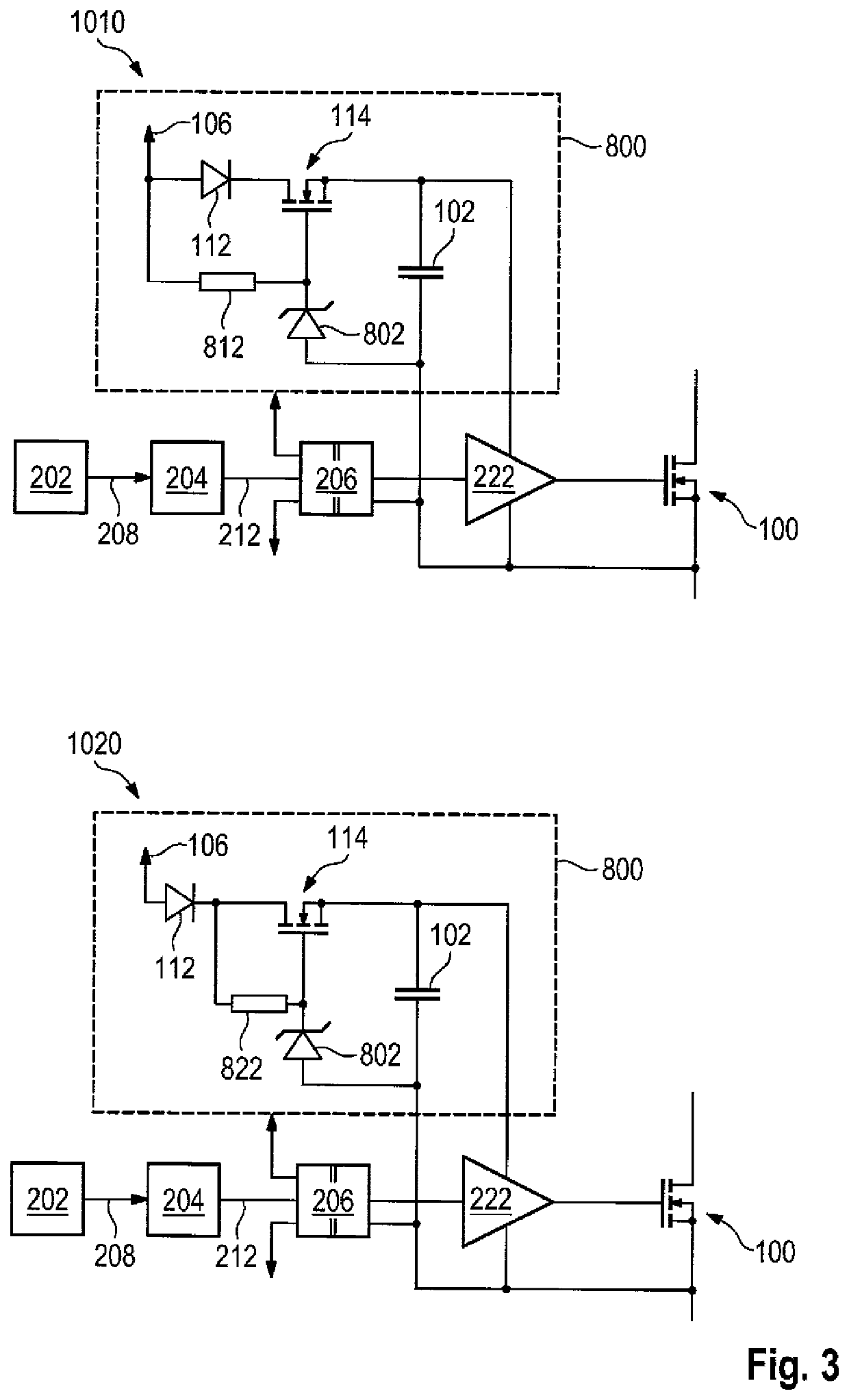Flexible bootstrapping for power electronics circuits
a power electronics circuit and charging circuit technology, applied in pulse technique, process and machine control, instruments, etc., can solve the problems of high output voltage loss and distortion, shortening service life, overheating and catching fire, etc., and achieve the effect of preventing the discharging of the energy storage devi
- Summary
- Abstract
- Description
- Claims
- Application Information
AI Technical Summary
Benefits of technology
Problems solved by technology
Method used
Image
Examples
Embodiment Construction
[0056]FIG. 1 shows a schematic representation of example circuits 810 and 820 for activating a power semiconductor switch using a bipolar transistor 804 by means of an embodiment of the method according to the invention. The bipolar transistor 804 fulfills the function of the charging switch, wherein its activation potential is different from the potential of the switching signal 212. Accordingly, a level shifter 206 can be optionally used for the control, which shifts the potential of the switching signal 212 to that of the source / emitter reference and which can be integrated together with the driver output stage of the gate driver 222. Preferably, the power is supplied on the input side of the level shifter 206 via the same potential as that of a controller that provides the switching signal 212. The use of an optocoupler or a signal isolator is also conceivable, wherein the switch used in this case does not need to be a power transistor, rather a small signal transistor may be su...
PUM
| Property | Measurement | Unit |
|---|---|---|
| threshold voltage | aaaaa | aaaaa |
| voltage | aaaaa | aaaaa |
| voltage | aaaaa | aaaaa |
Abstract
Description
Claims
Application Information
 Login to View More
Login to View More - R&D
- Intellectual Property
- Life Sciences
- Materials
- Tech Scout
- Unparalleled Data Quality
- Higher Quality Content
- 60% Fewer Hallucinations
Browse by: Latest US Patents, China's latest patents, Technical Efficacy Thesaurus, Application Domain, Technology Topic, Popular Technical Reports.
© 2025 PatSnap. All rights reserved.Legal|Privacy policy|Modern Slavery Act Transparency Statement|Sitemap|About US| Contact US: help@patsnap.com



